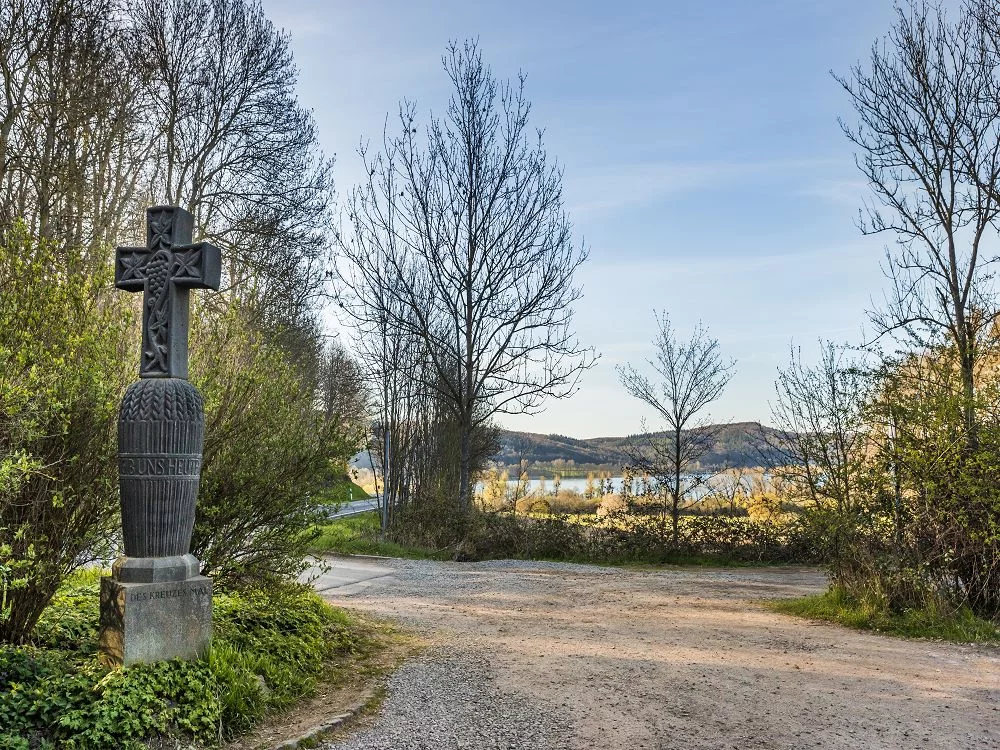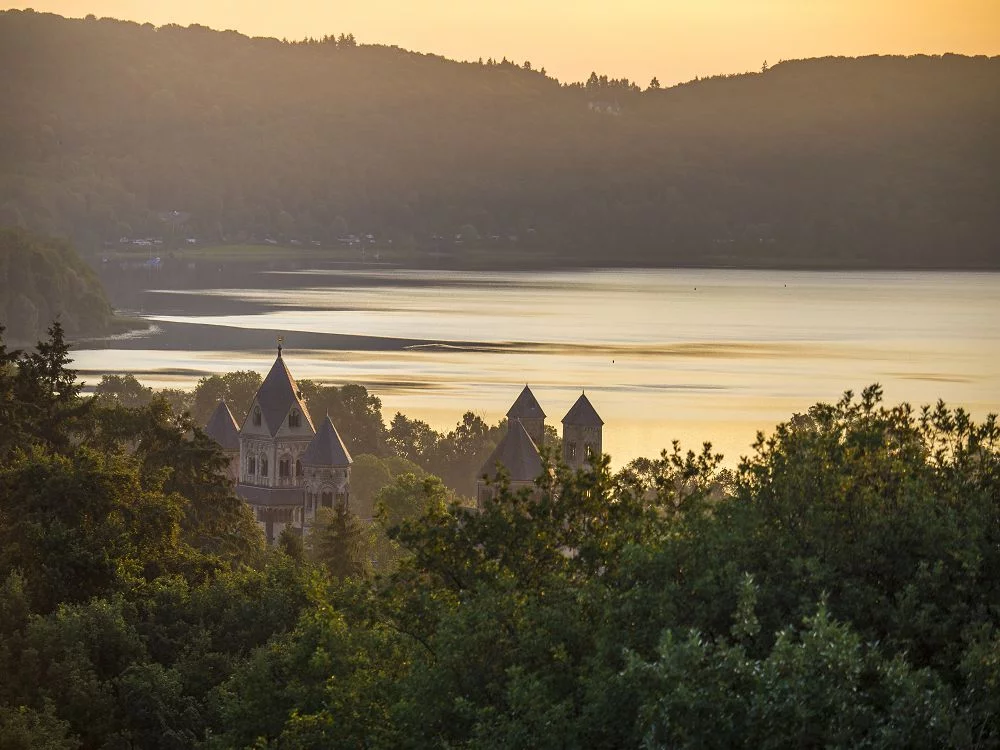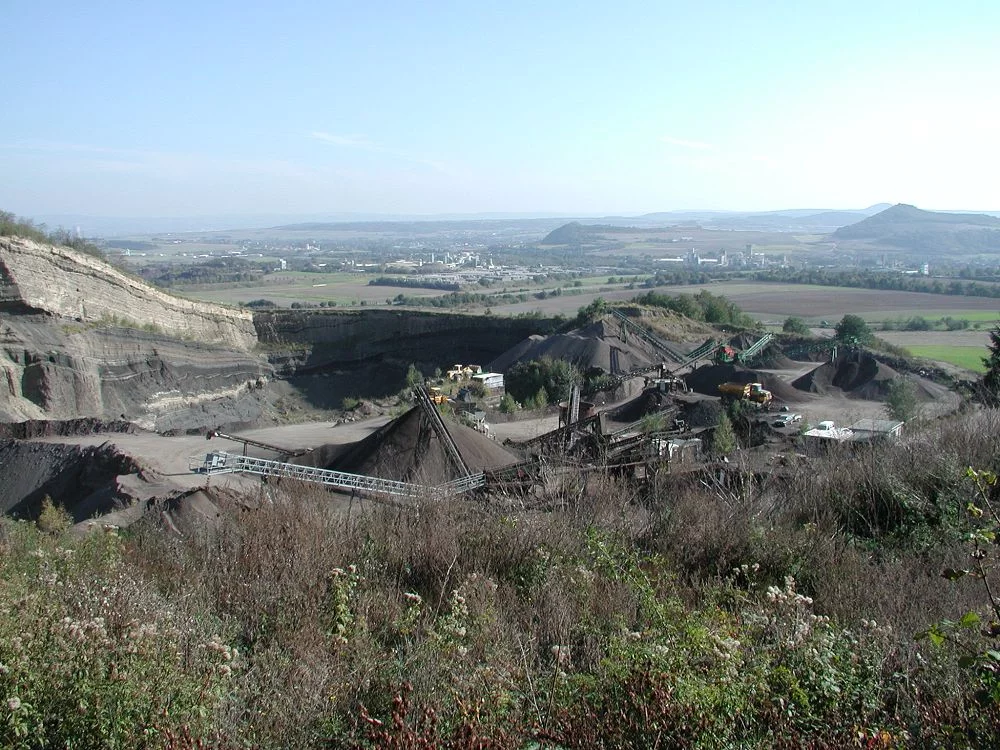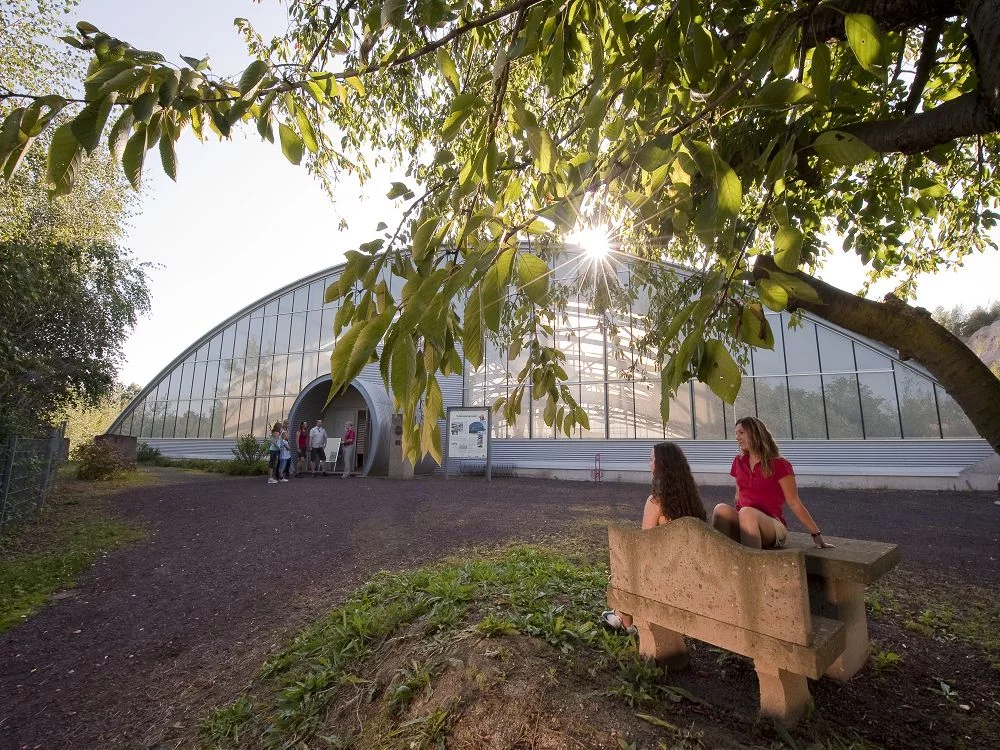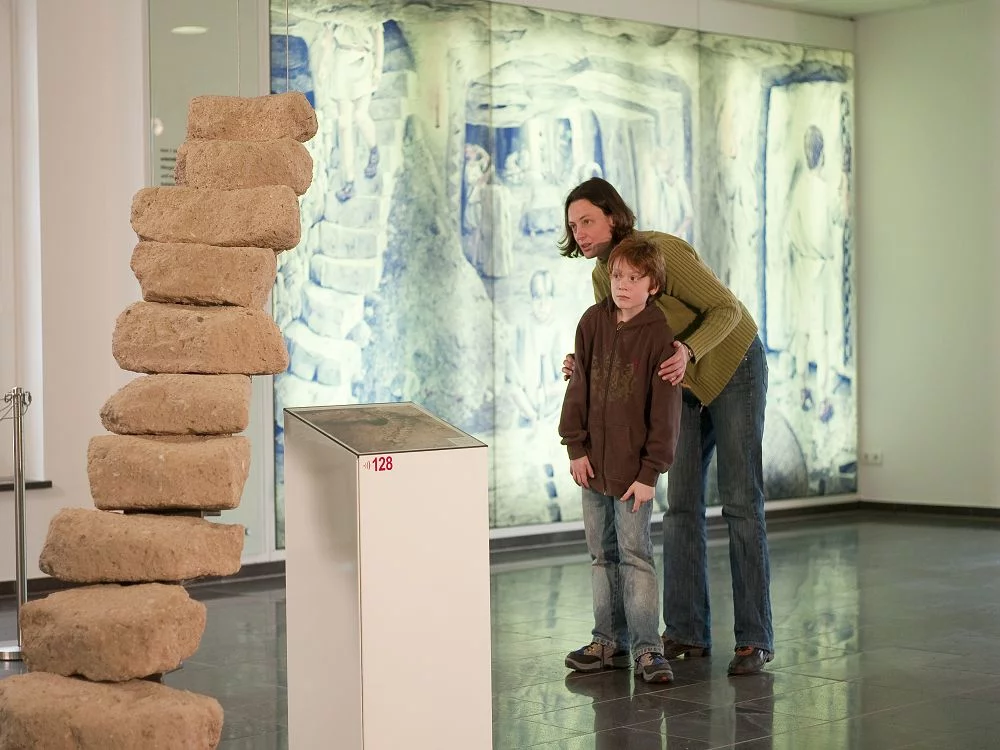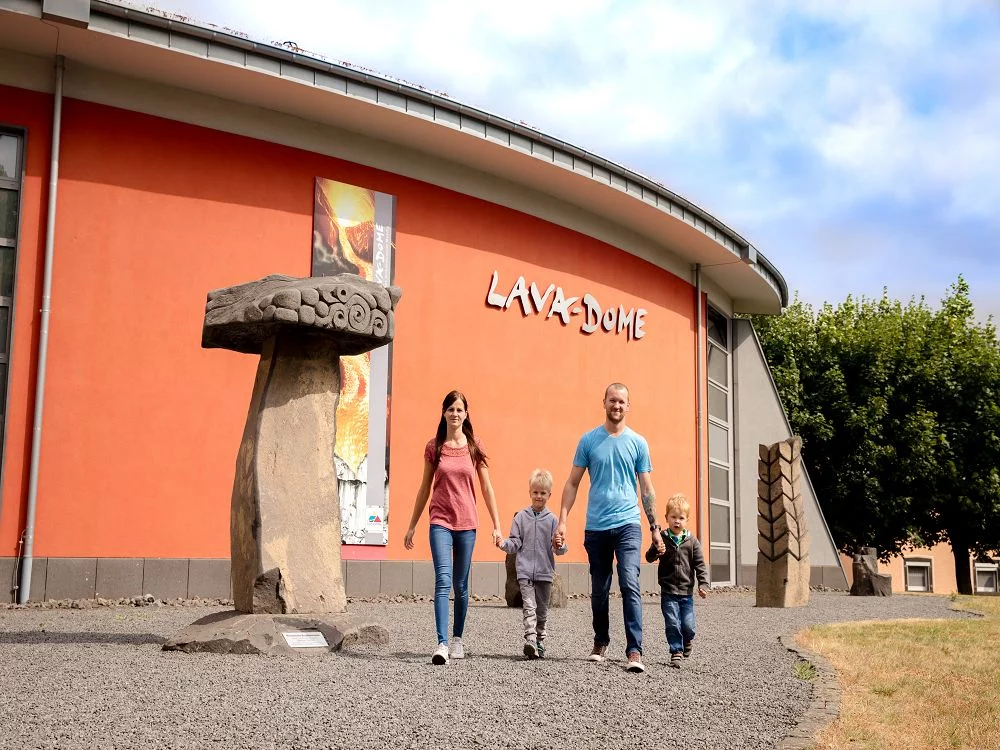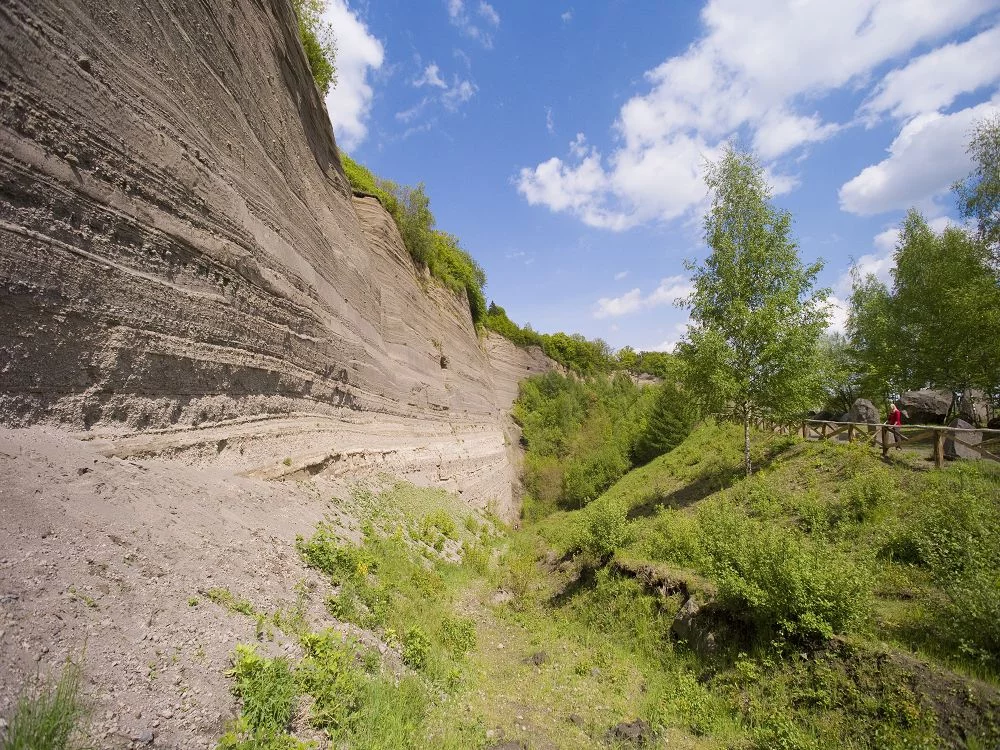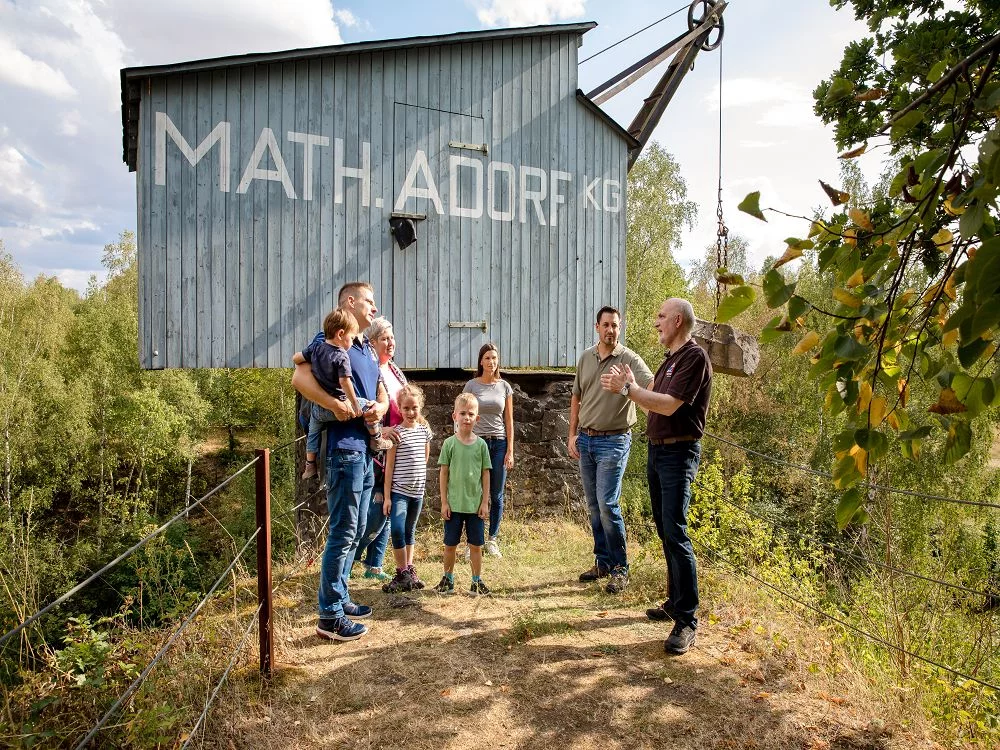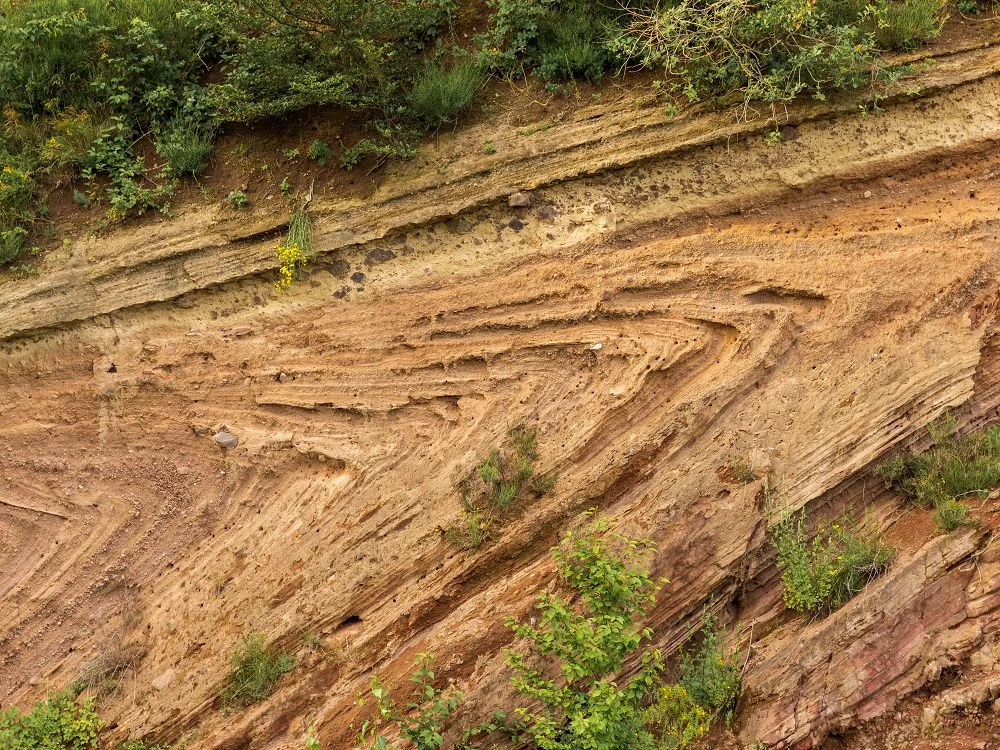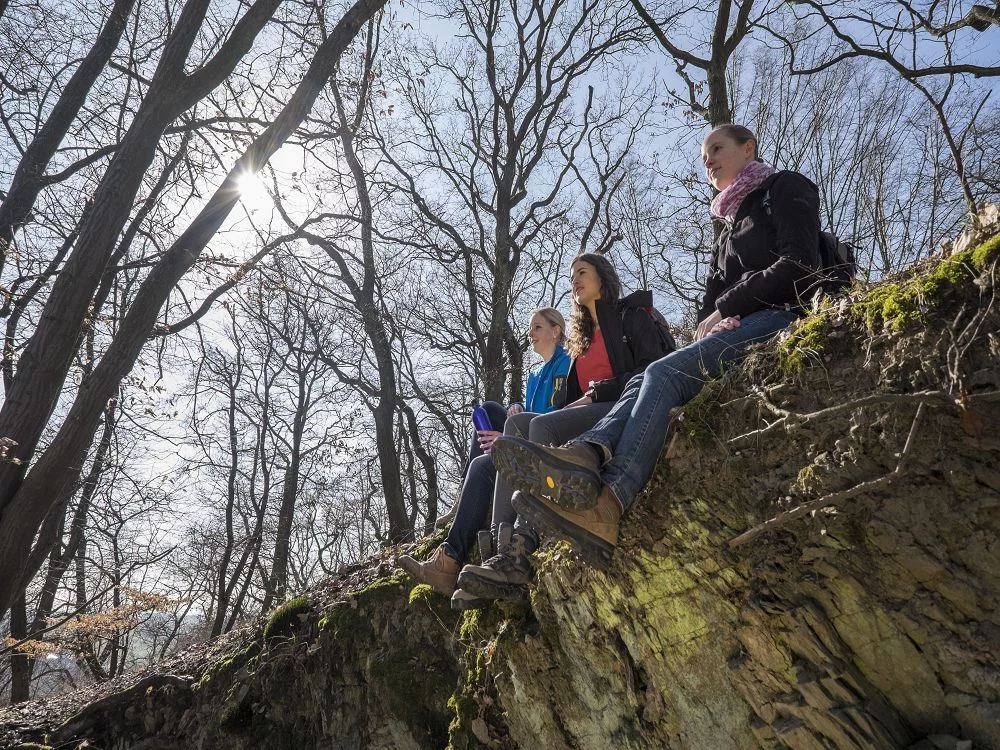In contrast to the circular lake of the neighboring Holzmaar, the Dürre Maar has increasingly silted up since its formation around 20,000 years ago. Over the millennia, a very special habitat has developed here: a raised bog. Its center is surrounded by a narrow marginal swamp (lagg). After heavy rainfall, this ring of water beautifully traces the circular shape of the maar basin. The raised bog in the center of the basin bulges slightly like a watch glass.
This is due to the dense peat moss cushions, which lie above the water table and can store up to twenty times their dry weight in water. A raised bog consists of 90 % water and is very low in nutrients. If you want to survive here, you need special survival tactics. And so, for example, the rare cranberry has come up with something special to get its fill without drowning. Instead of forming roots or stems to absorb nutrients, it covers the bulbs like a fine web that runs flat over the peat moss cushions. A number of rare animal species have also adapted to the extreme living conditions: Insects such as dragonflies and butterflies or breeding birds such as whinchats and lapwings live here. And at bird migration time, short-eared owls and grey herons also pay a visit to the Dürren Maar.
Around 20,000 years ago, a volcanic triumvirate formed along a fissure in the earth's crust: Holzmaar, Dürres Maar and Hetsche Maar. Over time, the name Holzmaar became established for the youngest of the three, as the maar was instrumental in securing the water supply for the nearby timber mill: The maar basin was used to collect the artificially dammed water from the Sammetbach stream. A little further to the north-west, the silted-up maar basin of the Dürren Maar presents a completely different landscape. Its name is also used as a collective term for all maars that are no longer filled with water - i.e. are arid. Today, the almost circular maar is covered by a rare raised bog that is still growing. The oldest of the three - the Hetsche Maar - has always been popularly known as “et Hetschemäärchen”. The reason why the maar became a “fairy tale” is obvious: with a diameter of just 60 meters, it is the smallest of all the Eifel maars. Due to its small size, it quickly silted up. Today, the valuable wetland biotope is home to toads and frogs. The local population knew this too and simply named the small maar after its inhabitants: “Hetsch” means “toad” in local dialect.

